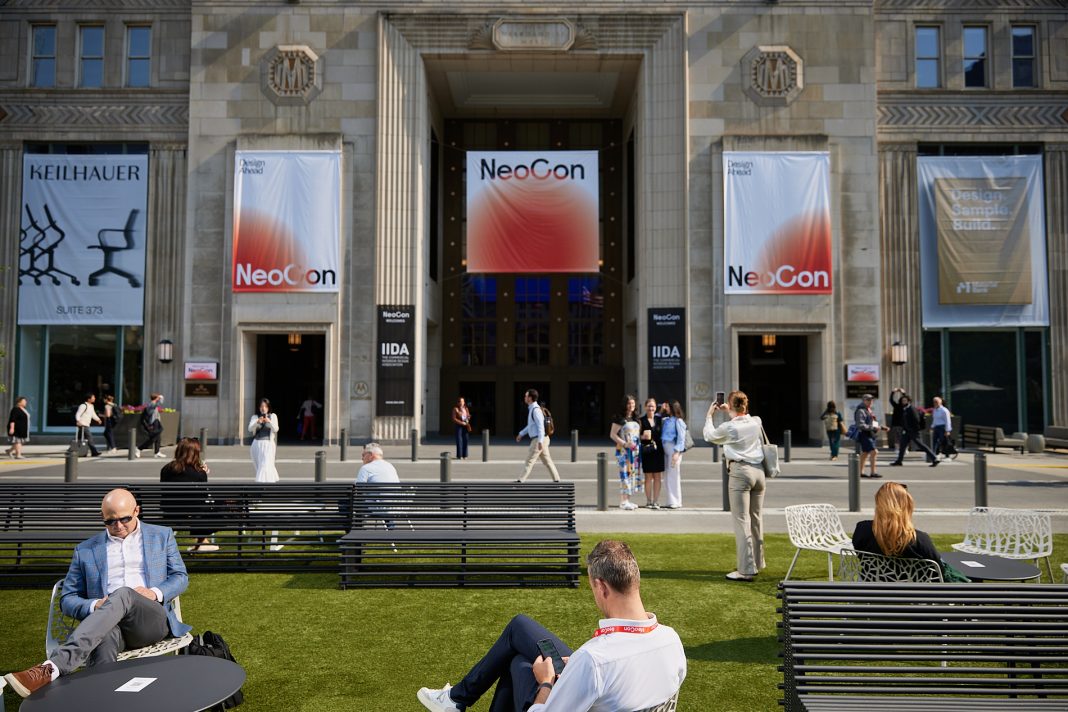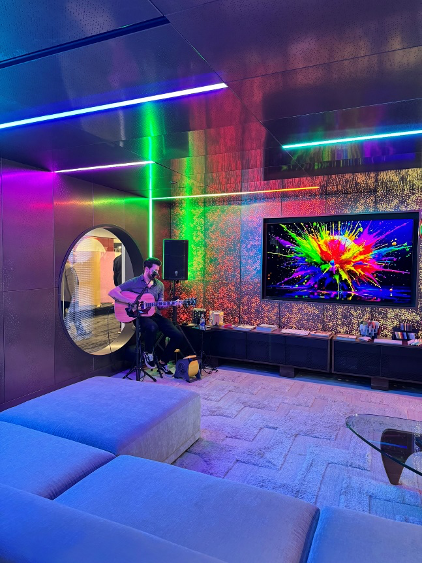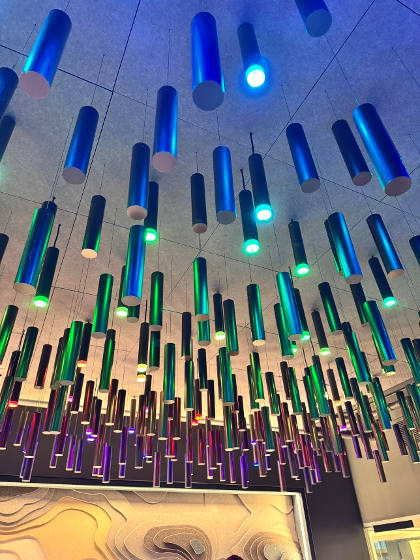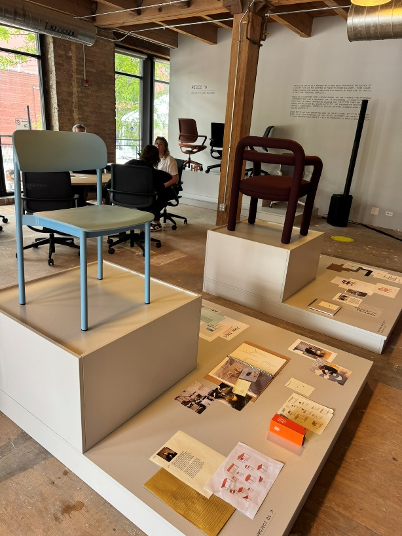From thoughtful details to sensory immersion, the industry continues to elevate the practice of interior design.
This June, we engaged Stephanie Beasley, Vice President and Design Manager at architecture and design firm Corgan, to reflect on emerging trends from NeoCon and Design Days 2025. Here’s what stood out.
All in the Details
Intentionality and ingenuity emerged as prevailing themes among leading furniture manufacturers, signaling a continued evolution in workplace design. From elegantly concealed height-adjustment mechanisms to the seamless incorporation of everyday luxuries, the industry is clearly embracing both performance and aesthetic sophistication. Such design interventions make personalization not just possible but intuitive, reframing the specifying process as one of curating experiences, rather than simply selecting objects.
Nienkämper particularly distinguished itself with the debut of its NeoCon HiP Award-winning Una furniture collection. This line introduces an innovative knit sleeve that discreetly envelops the height-adjustable leg system. The textile not only accommodates vertical motion with fluidity but also transforms a technical necessity into a sculptural gesture—imbuing the table with a contemporary, almost futuristic character. Offered in a range of refined knit colors and paired with curated hard surface finishes, Una presents a compelling reimagining of adaptable work surfaces through the lens of material elegance and tactile experience.

Elsewhere, brands such as Halcon, Geiger, and Steelcase are pushing the boundaries of integrated functionality. From concealed beverage refrigeration and refined display vitrines to a hinged cubby tailored for vinyl records and turntables, these elements reflect a growing emphasis on personalization and lifestyle-driven workplace solutions. Furniture brand Darran even introduced a credenza featuring a plush hidden nook designed for a fury friend—subtly reinforcing the idea that workspace environments should accommodate the full spectrum of human (and even animal) needs.
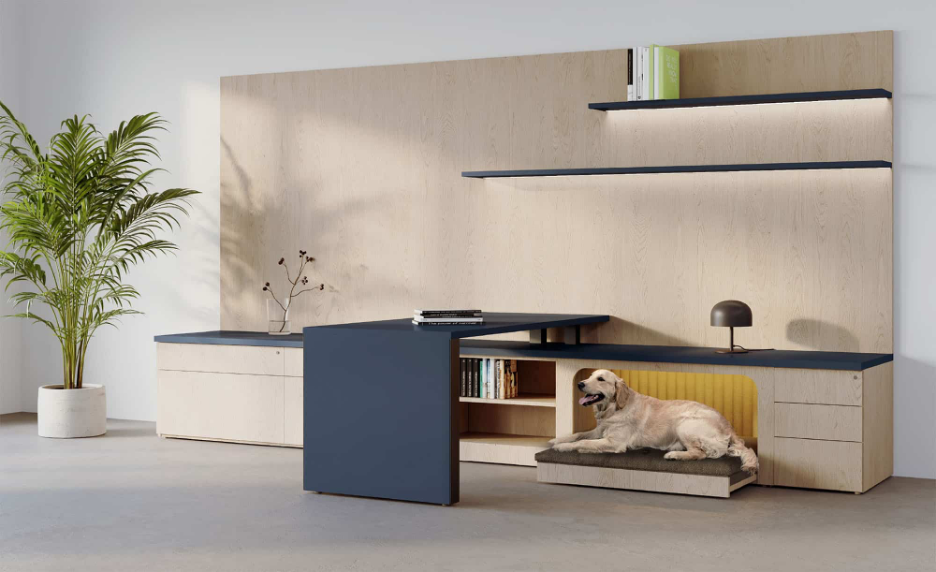
Decadent Expression of Color
This year’s color story was nothing short of exuberant—juicy, saturated hues infused both architectural finishes and furnishings with renewed vitality. Cherry red, mustard yellow, and ultraviolet grape emerged not as mere accents but as central protagonists, manifesting across tactile textiles, and painted metals and woods. These chromatic statements extended beyond furniture, enveloping interior volumes through textural carpets and visually arresting wallcoverings, redefining the spatial atmosphere with playful intensity.
A standout reinterpretation came from Knoll’s iconic Barcelona Chair, unexpectedly upholstered in a deep violet mohair. This material shift recast the piece—traditionally seen in black or ivory leather—into something at once provocative and strangely familiar. Similarly, the Knoll Wassily Lounge Chair defied expectation: its vibrant red metal frame draped in cherry-drenched cowhide introduced a new narrative of modernism charged with color and material contrast.
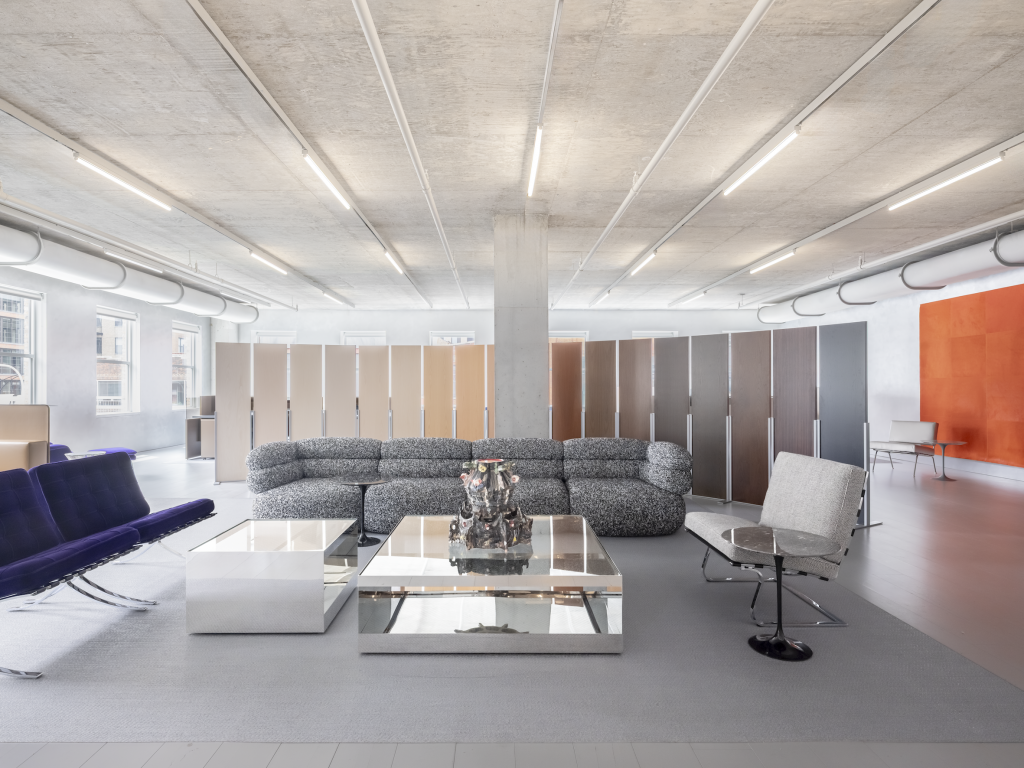
Breaking away from mid-century heritage but no less compelling was Mizetto’s Cargo Modular, recipient of a NeoCon HiP Award. With an almost iridescent purple textile and strapped, compressed form, the piece explored the tension between structured containment and expressive materiality—an interplay of restraint and release that felt both youthful and experimental.
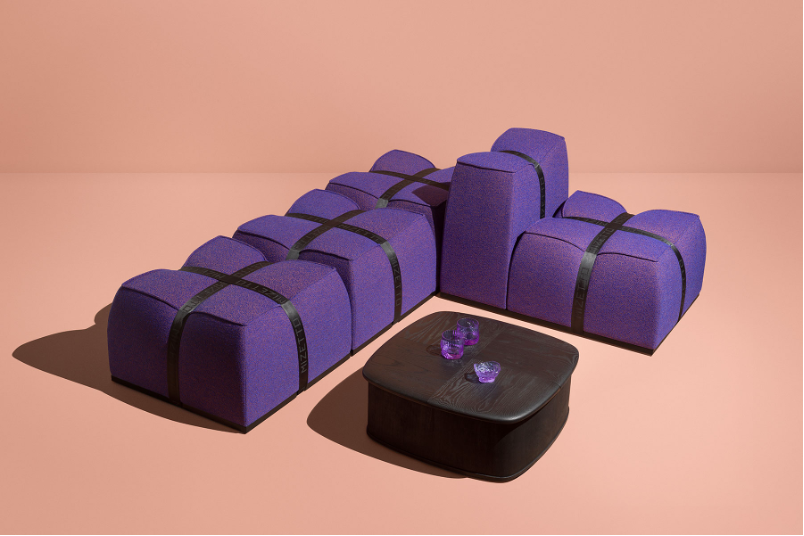
While ultraviolet tones offered moments of surprise, deeper cherry and grounded mustard hues had broader reach, anchoring a wide spectrum of interiors. Mohawk Group’s Multisensory Collection elegantly translated these colors into flooring solutions, where both carpet and resilient surfaces offered nuanced interpretations of bold chromatics.

Meanwhile, Designtex and Wolf-Gordon pushed the dialogue further, integrating these hues into oversized florals and linear graphic patterns—demonstrating how bold color can coexist with sophistication and spatial clarity.

Sensory Immersion
With increased awareness and research into neurodiversity, inclusive design has taken a prominent role across the built environment—and this year’s NeoCon showrooms reflected that shift with immersive, multisensory experiences. Rather than defaulting to static product displays that prioritize sight and touch, exhibitors embraced spatial storytelling, engaging all five senses to communicate the full potential of their offerings.
Few installations captured this ethos as completely as the Turf showroom—a space that blurred the boundary between product display and experiential art. Often named among the most talked-about environments of NeoCon, it began not with sight, but sensation: the low-frequency vibrations of a live DJ set pulsed through the space, guiding visitors into a curated path of discovery. Upon entry, guests were invited to choose their journey through a series of intimate corridors, each clad in Turf’s diverse acoustic paneling. The experience was enriched with chromatic neon lighting and ambient scent, while the DJ’s music gradually receded, creating a gentle sensory descent. It was an unexpected moment of decompression amid the intensity of the show, and simultaneously, a compelling demonstration of the functional—and emotional—capabilities of the brand’s acoustic solutions.
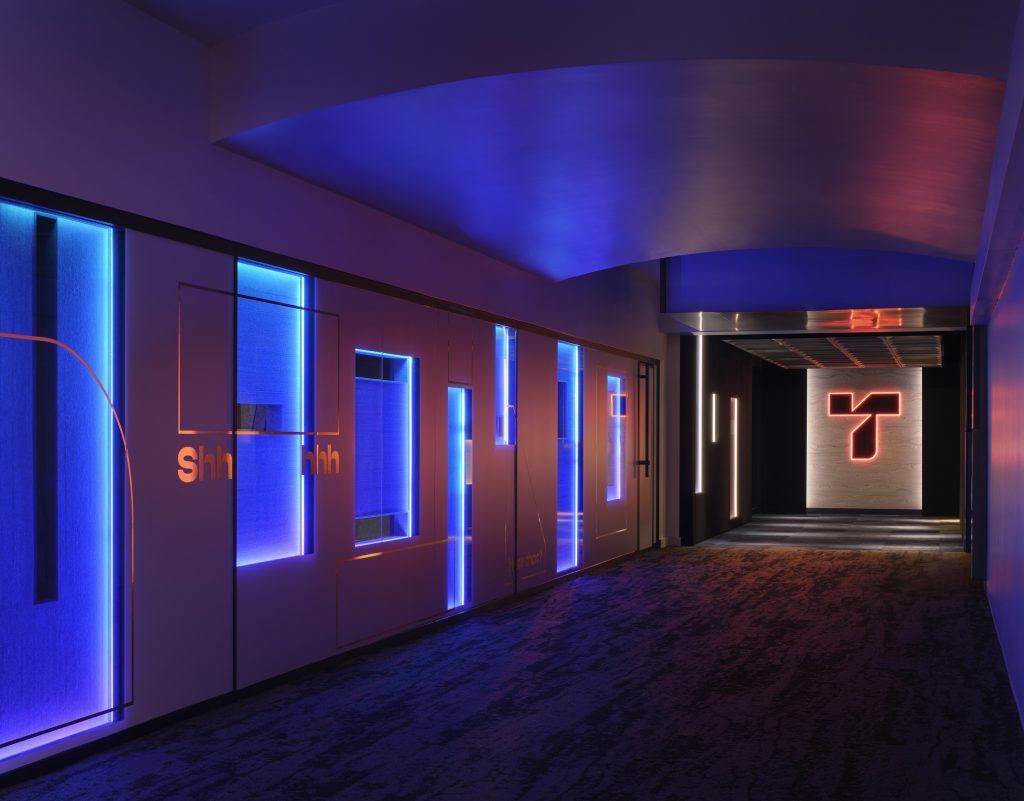
Equally memorable was Arktura’s award-winning showroom, which earned NeoCon Gold for its new RGBW integrated backlighting system. Conceived as an immersive lighting and acoustic environment, the space was shrouded in perforated panels across walls and ceilings, eliminating ambient distractions and focusing attention inward. The RGBW system cycled fluidly through a full chromatic range—pulsing, shifting, and glowing in rhythm with a live acoustic guitar performance. The effect was dynamic and atmospheric, transforming lighting from a static background element into a responsive, adaptable design tool. Arktura’s installation not only showcased technical sophistication but also illustrated how lighting can shape emotional resonance within a space.
Process Forward
In design, the process is often as significant—if not more so—than the final outcome. This year, it was refreshing to see that ethos reflected in many product launches, where the creative journey was revealed. Sketches, models, prototypes, and even missteps were celebrated, offering an intimate window into the minds and methods behind the designs.
At Geiger, this transparency came to life in the debut of Lijn (pronounced “Line”), a refined yet inviting chair series from acclaimed Dutch designer Carole Baijings. Known for her tactile, iterative process, Baijings embraces experimentation—allowing failures and discoveries to shape both form and palette. In the showroom, her design evolution was presented almost archivally: behind glass, a curated collection of scale models, torn paper studies, upholstery tests, and handwritten narratives mapped the chair’s development. The installation reframed the product not as a finished object, but as the culmination of a deeply personal design exploration.
Similarly, the Allermuir showroom eschewed the traditional furniture display in favor of a raw, process-oriented environment that evoked the energy of a working studio. Housed within an industrial shell, the space featured loosely enclosed vignettes, with mesh scrims functioning as ad hoc display panels. Pedestals showcased new seating introductions not just as finished forms, but as ongoing investigations—accompanied by scattered sketches, material swatches, and contextual notes. This open-ended approach invited visitors into the design dialogue, illuminating the rationale behind form, function, and color in a way that felt participatory rather than prescriptive.
By foregrounding process, both Geiger and Allermuir reminded us that thoughtful design is rarely linear. Instead, it is layered, exploratory, and fundamentally human—qualities that give depth and authenticity to the final result.

